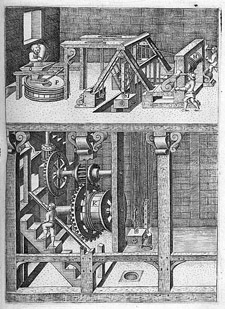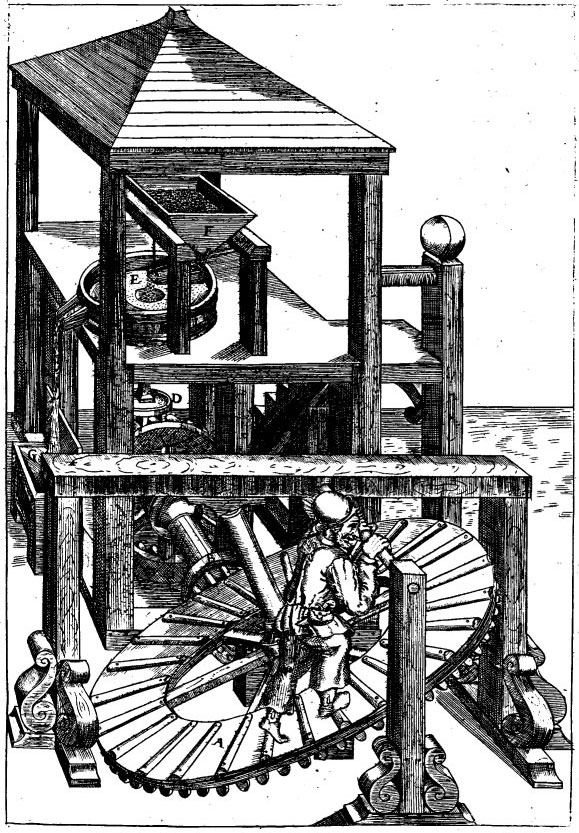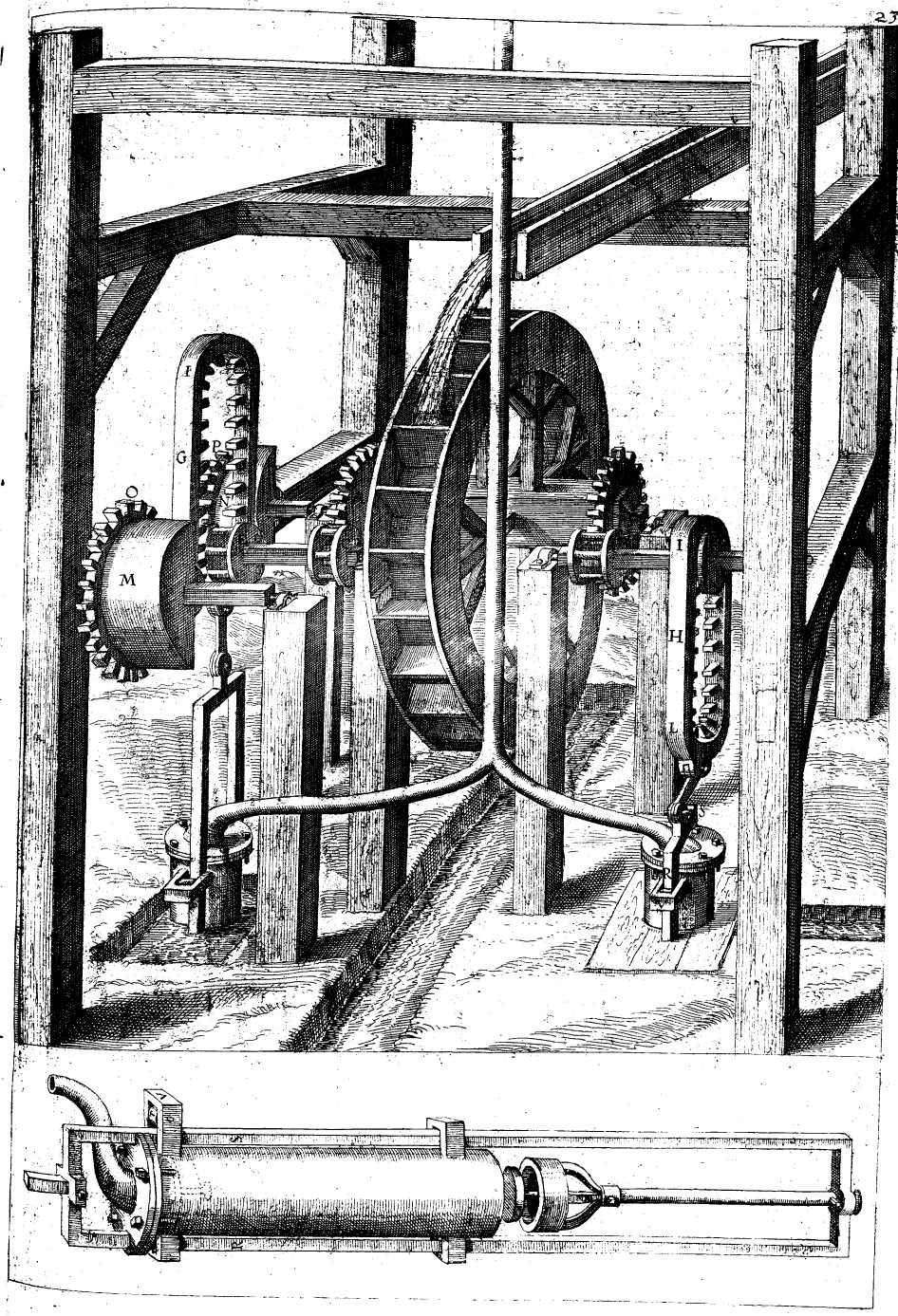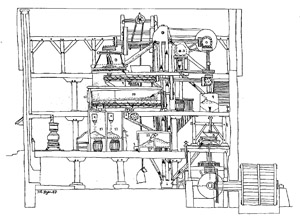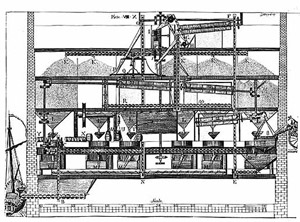 Mills and Machinery from Medieval to Colonial Times
One of the most enduring legacies of the Middle Ages was the intensification of powered machinery in society. While most of the mechanical elements known to the Middle Ages were known to the Romans (with the likely exception of the crank), European innovators took great pride in elaborating on those mechanical components. By the 15th century, especially, Europeans began inventing new and fabulous machinery — Leonardo's flying machines are only one well-known example.
In this lesson, a number of images and documents from the transitional period from the Middle Ages to the American colonial experience illustrate the mechanical toolkit with which the settlers had to work.
Agostino Ramelli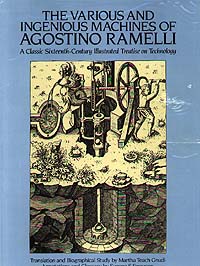
Clockwork Mill and gristmill from ‘Le diverse et artificiose machine' (trans. as The Various and Ingenious Machines of Agostino Ramelli)
trans. M.T. Gnudi and E.S. Ferguson (NY: Dover, 1994) plate XXX
Images
Background
Agostino Ramelli (c1531-c1600) came from Italy but ended up in the
service of the armies of the Marquis de Marignan and of the Duc d'Anjou
who later became King Henry III of France. Late in life, his fame as an
engineer inspired him to publish the most lavishly-illustrated technical
book in history at the time, filled with "diverse and artificial" (that
is, not natural but rather of the mind and hand of men) machinery
including waterwheels, mills, pumps, cranes, sawmills, military bridges,
siege weapons. Although many of his machines are relatively impractical,
they do demonstrate the attention to inventive detail in gearing and
machinery that characterized the Renaissance Artist-Engineers (a group
to which Leonardo da Vinci certainly belongs).
Implicit in most of his machines is waterpower, which by the latter
middle ages had become the standard form of motive power for all
industrial and agricultural mills. Although Ramelli is clearly
interested in more than waterwheels, they can be used as a centralized power source to drive many parts of the machine.
See also the Smithsonian Institution's online exhibit about Ramelli.
Questions
Nicholas Bloy, Engineer
"The Severall Engines that Nicholas Bloy Engineer professeth," 1620
From Early English Books Online, STC 3138.5
Source Text
Background
Absolutely nothing is known about Bloy beyond this unique
broadsheet. In the early 17th-century London, however, numerous men
("projectors" for they proposed all sorts of "projects") were known in
and around the Elizabethan and Stuart courts. The most famous of these
was Cornelius Drebble (1572-1634), a mathematician and engineer from
Holland who attended the court of James I, inventing, among other
things, a self-regulating oven, pumping engines for the City of London,
clocks, a supposed perpetual motion machine, and even a 12-person
submarine that could remain underwater for hours. Drebble seems to have
actually constructed many of these machines, and other inventors at the
time sought similar patronage. Some found support from the Marquis of
Worcester, who seems to have patronized a sort of ‘invention
factory' in Vauxhall (just upriver from London). Whether these
projectors ever delivered on their many ideas is unclear; it is clear,
however, that the 17th century was a time ripe for invention.
Questions
Oliver Evans
The Young Mill-Wright and Miller's Guide
1795 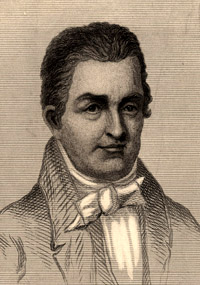
Images
Background
Oliver Evans is celebrated as one of the first great American engineers. Born in Delaware in 1755, Evans became an inventor in his early 20s, working on all sorts of mechanical problems like the carding of wool, dredging, steam engines, and especially mills. His great contribution to milling technology was that he figured out ways, using nothing but gears and belt drives, to automate fully a flour mill. According to his treatise, The Young Mill-wright and Millers' Guide (1809), the mill would be powered by water (or steam) the farmer would unload his sacks of grain into the hopper at the door and the mill would move the grain through the millstones, automatically delivering flour to the waiting boats below. As Betsey McAndrew puts it, "Oliver Evans changed the daily routine of the miller by inventing elevators, conveyors, rolling screens or grain cleaners, and the hopper boy. He not only made the life of the miller easier, but he also started a trend of improving technology in milling and other industries."
See also the Pond Lilly Mill Restoration pages about Evans.
Questions
Return to:
In-Depth Articles
 |
|||||||||||

|
